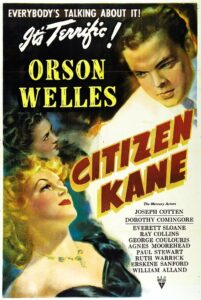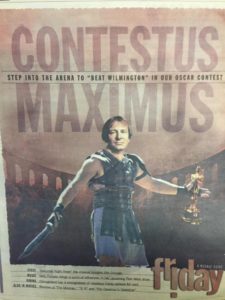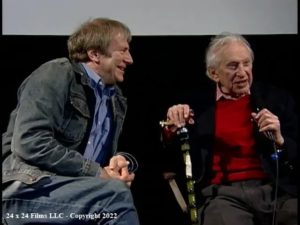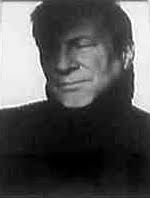FILM CLASSIC REVIEW: BREATHLESS by Michael Wilmington
Breathless (A Bout de Souffle) (Four Stars)
France; Jean-Luc Godard, 1959 (Criterion)
Godard. A Bout de Souffle. A film. Out of breath. Breathless.
What’s it about? A guy named Michel Poiccard steals a car, drives from Marseilles to Paris, ecstatically sings of a girl named Patricia (Pa-Pa-Pa-Patricia!), finds a gun, shoots and kills a cop on the road, tries to cash an uncashable check, stares at and mimics a Bogart still in front of a cinema, finds Patricia hawking New York Herald Tribunes on the street, goes to her room, bandies with her about love, art, philosophy and William Faulkner (Between grief and nothing I will take grief, she quotes from The Wild Palms)…
SPOILER ALERT
…He smokes endless cigarettes, gets betrayed, runs, gets shot, dies. Deguelasse, Michel mutters with his last breath, staring and making faces at Patricia. I don’t know what it means,’ says Patricia. She turns away from the camera. Finis.
END OF SPOILER
That’s Breathless, the 1959 black-and-white Jean-Luc Godard French film classic that, like Orson Welles’ 1941 Citizen Kane — another masterpiece by a revolutionary cineaste still in his 20s — forever changed the ways we look at film. It changed also the way moviemakers shot movies and critics wrote about them, and perhaps changed a bit the ways we all look at life too.
There’s a key difference though. Welles made us all believe that, if you could get all the tools of the movie industry at your disposal, you could tell stories so magical and deep, dense and rich and multi-leveled, that they’d open up a whole new world. Godard made us believe that, if you’d seen enough movies and were passionate about what you liked, you could grab a camera, find some friends, walk out on the street, and just start shooting. You could ignore much of the old studio apparatus and routine — and make a movie not according to the industry rules and protocols, but right out of your own life and thoughts, tastes and feelings.
Welles was a greater artist than Godard, and Kane the greater movie, still the best of all time in my opinion. But Godard’s feat was probably the more revolutionary: the more empowering, liberating. Citizen Kane, as Godard’s friend (later sometime antagonist, and McCartney to his Lennon), François Truffaut once said, probably started more (studio) movie directors on their vocation than any other. But Breathless probably made more people everywhere actually believe they could make movies themselves, whether they worked in a studio or not. There were decades of independent and experimental films before Breathless. But this was the one that, like Kane for the studio movie, made it all look so easy, so effortless. Just walk down a street with a camera. With a gun. With a girl. Just shoot.
Of course it’s not true. Breathless is a very artful piece, and a product of the French film industry. It was made by a director deeply schooled in film history and tradition and technique, even if its celebrated jump cuts –jagged editing leaps within a continuous scene, a technique which prompted the Time reviewer to call Breathless a cubistic thriller — made Godard’s movie look deliberately ragged and choppy. (Actually, the jump cuts were accidental, providential, and not something Godard used all that much in his later films. Here, there was a reason. Godard had shot Breathless too long, needed to cut half an hour or more, and allegedly took his mentor/Breathless cast member Jean-Pierre Melville‘s advice not to cut whole scenes to shave off the extra time, but to cut within scenes. Thence: the jumps.)
Godard’s youthful stars Jean Paul Belmondo and Jean Seberg (Michel and Patricia) were not nonentities. Belmondo had made ten films before Breathless, including A Double Tour for Godard‘s buddy (and a Breathless technical advisor) Claude Chabrol. He‘d even starred as D‘Artagnan on a TV version of The Three Musketeers. Jean Seberg, while still in her teens, fresh out of Marshalltown Iowa, had made two big Hollywood movies for one of Godard’s favorite directors, Otto (Where the Sidewalk Ends) Preminger, starring in Preminger‘s versions of George Bernard Shaw’s play Saint Joan and Francois Sagan‘s novel “Bonjour Tristesse.” Even if they were both flops back then (and they look much better today) they were well-known, world famous flops.
So Godard wasn’t just walking out on the street with his Cahier du Cinema pals when he made Breathless. But there are as lot of his buddies and Cahier-ites involved in it — including not just Truffaut, Chabrol and Melville, and the brilliant young cinematographer Raoul Coutard, but future directors like Philippe De Broca, Jean-Louis Richard, Jean Douchet, Richard Balducci and Daniel Boulanger, who co-wrote De Broca’s King of Hearts and plays the dour cop chasing Michel, Inspector Vital.
Still, on screen Michel and Patricia do look like two good-looking kids who just wandered into the movie off the street. They’re perfect movie lovers, blasé on the surface, dark or heart-broken underneath. They don’t talk the old familiar movie talk. They talk about life and art and politics. They josh and joust with each other. Coutard’s camera drifts around them. They smoke. We never see them screw, but we know they have.
One of the most often-cited, often discussed scenes in Breathless simply shows them lazing around Patricia’s room, staring or jabbering away, under prints of works by Renoir and Picasso. They don’t seem like a crook/killer and his trollop. They seem like a couple of intellectuals or semi-intellectuals, or a small-time hustler and a rich girl slumming. They’re involved in a thriller plot, taken by Truffaut from a real-life crime story. But it’s as if they just wandered into the thriller, just as they wandered into Pa-Pa-Patricia’s apartment.
Existentialism and Monogram Pictures (the low-budget studio to which Godard dedicated Breathless) embrace in Breathless. It’s a movie fed by many other movies, even if it suggests something off the cuff, unwinding before us, caught in the machinery of chance. The presence of a gun in the glove compartment of the car Michel steals is utterly fortuitous, the murder (for all we can tell) almost an accident, something that just happened between two kids. Part of the love affair of a Bogie “Harder They Fall” guy and a Fallen Angel out of Where the Sidewalk Ends.
That’s the key to most of Godard’s films of the 60s, which is still regarded (rightly) as his greatest period. It’s a movie-lovers anti-movie, or counter-movie, a defiant act of rebellion by a director who knows the score and deliberately breaks the rules. Breathless came out shortly after Truffaut had revolutionized French film ina different way with his own great feature debut, The 400 Blows, the semi-autobiographical tale of a runaway movie-loving delinquent, named Antoine Doinel. And in a way, Breathless, made from the story Truffaut found, is Godard’s 400 Blows, his semi-autobiographical fantasy about a runaway movie-loving delinquent named Michel. It was also a huge hit, the biggest critical and commercial success of Godard’s career. He never had another smash like Breathless, though, by now, he‘s made almost a hundred films, including, among them, a dozen or so inarguable classics, films like Vivre sa Vie, Pierrot le Fou and Contempt.
He became a Marxist for a while, and a lot of cine-academics in the ‘70s argued that his (then) politics were a major part of what made him great — though Godard’s most blatantly political films, his essays and documentaries from the ’70s, are among his least effective, least memorable. Later, he got more rigorous, more poetic, better again. Breathless is still easily the most powerful political movie he ever made, the most heart-wrenching romance. It’s had thousands of children. But it still looks as fresh as it did in 1959, though now, new black-and-white film and film-making are almost gone. We look at Breathless today and we think: Anybody can do this. I can do this. Just find some friends. Find your heart. Find a camera. Just shoot. (In French, with English subtitles.)




